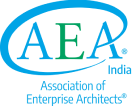TOGAF-based Enterprise Architecture Practice: An Exploratory Case Study
Organizations use enterprise architecture (EA), which describes an enterprise from an integrated business and IT
perspective, to improve business and IT alignment. The literature describes many different methodologies to organize
EA practice. However, organizations typically adapt these EA methodologies to their specific needs rather than use
them directly “out of the box”. As a result, actual EA practices often differ substantially from the original EA
methodologies. Unsurprisingly, establishing a successful EA practice remains troublesome even though multiple
detailed methodologies exist. However, researchers have yet to investigate the adaptation of EA methodologies in
organizations. In this paper, based on an in-depth qualitative case study, I explore the adaptation of the most popular
EA methodology, TOGAF, to address this gap. In this paper, I holistically describe a TOGAF-based EA practice and
analyze the adaptation of the TOGAF methodology in an organization. From my findings, I conclude that none of the
TOGAF-specific recommendations proved useful in the studied EA practice. Supported by ample indirect evidence
available in the existing EA literature, this study questions the value of TOGAF as a standard for EA practice.
Moreover, the studied EA practice hardly resembles any established EA methodologies or theoretical
conceptualizations. Therefore, the EA practice that this case study describes presents a new, largely unexplored
empirical phenomenon. Although this study raises multiple “inconvenient” questions challenging the status quo in the
EA discipline, it does not provide definite answers to most of these questions, which calls for further research on
methodological aspects of EA practice.
